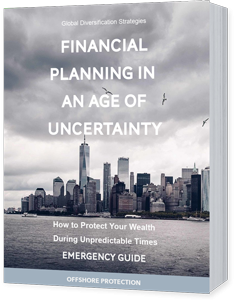The days where offshore jurisdictions issued bank licenses with minimum requirements are long gone. Now there are strict capitalization rules, due diligence procedures, and relevant experience requirements with some jurisdictions additionally requiring a local office and the use of local employees.
However, there are alternative offshore financial structures that still offer a wide range of services such as: deposit taking, payment processing, as well as investing, brokerage, and forex trading. An offshore financial company offers an incredible variety of financial services and possibilities without having to go through the long background checks, huge risk, massive capital investment, and complex process of opening an offshore bank.
If one is looking to act as a financial service provider whether it is making loans to individuals or corporation, trading in stocks or bond, security investments, fortunately you do not need to establish a bank to do so. Offshore jurisdictions have supportive financial regulatory environments that allow for offshore company structures to exist with minimal interference and because it is a non-bank financial structure does not have to adhere to all the regulatory mechanisms and oversight that generally is required when managing an offshore banking institution.
The offshore banking formation industry has had to deal with a lot of scrutiny and oversight from various global regulators in the last decade. The changing nature of the global offshore banking environment and the more rigid banking requirements make financial company incorporation look even more enterprising. And like many corporations, financial companies enjoy the same taxation benefits, and pay no taxation on capital gains. Financial licensed companies have the best of both worlds.
What is an Offshore Financial Company?
An offshore financial company or international financial company is a very broad term that can be seen to encompass a whole range of offshore financial services and activities.
An offshore financial company can act as an investment entity, similar to an offshore brokerage account, with payment processing capacity similar to an offshore merchant account, together with the asset protection capability of an offshore company.
Top Uses
An offshore financial company can be used for many purposes depending upon the jurisdiction.
There are many uses and enterprises which an individual or corporation can engage in whether it is investing, holding, payment processing, as well as in dealing with e-commerce, e-currency, and e-trading.
Some of the more popular uses of a financial company include:
- Regional or global investing
- Issuing and underwriting of securities
- Asset and fund management
- Financial advisory
- Opening an offshore bank account
- Trading, holding and transfer online financial platform
- Accept client assets and payments
- Manage funds in an offshore jurisdiction
- Open currency and FX trading
- Open BitCoin accounts
- Accept payments from third parties
- Foreign currency payment processing
Offshore Financial Companies are given a broad spectrum of financial activities to engage in without needing to apply for a banking license. However, very few licenses offer all of these activities under just one license, so it is important to prioritize as to what are the main core financial services that are intended to be offered.
Some of the most popular licensed companies which we form are the Panama Financial Company and a Mauritius Global Business Licence which open up the doors to financial services.

What is an Offshore Financial Service Provider?
Typically a financial provider is one who manages funds from a third party, which can be used in any number of investment, insurance, or forex trading schemes. They are non-bank entities that act as financial intermediaries as holders or managers of third-party capital.
The financial services used vary depending upon the needs or desires of the individual, from investment to foreign exchange, bond or securities trading, remittances, or pre-paid debit card transactions.
Depending upon the offshore jurisdiction there are different regulations and laws which govern the financial entity or offshore structure and limit such an entity from conducting certain types of financial activities without a proper licence.
An International Financial Company is one such type of offshore structure, that can act like both an offshore brokerage account as well as a lending institution as well as other financial services without the need of getting a traditional banking licence.
What are Financial Companies & Services?
While there are a number of financial companies and a host of jurisdictions to choose from; we have come up with a shortened list that offer the best opportunities with the least amount of red-tape.
These companies enable you set up electronic payment services with merchant account and e-money wallet services as well as acting like a investment brokerage account where you can hold and trade securities, bonds and deal in forex currencies.
- Electronic Payment Services
- Establish a Merchant account and take credit card payments from anywhere in the world straight into your offshore account.
- E-Money Wallet
- Digital e-currency that allows for deposits, payments and transfers online using software allowing you to hold and use funds like a bank account.
- Forex License
- Trade global currencies through a currency exchange on an online trading platform.
- Brokerage Account
- Hold and trade mutual and index funds, securities, as well as currencies and other investment products.
For more: How to Get A Forex License
The following are the products, licences and companies that we currently offer.
Offshore Companies
- Panama Financial Company
- Swiss Trust Company
- Georgia International Financial Company
- New Zealand Financial Company
Licences & Companies
- Vanuatu Forex and Securities Dealer Licence
- Belize Brokerage Licence
- Mauritius Global Business Licence
- Seychelles Licence Company
Cryptocurrency Exchange Licence
- Estonia Cryptocurrency Exchange Licence
- Swiss Cryptocurrency Exchange Licence
- Lithuania Cryptocurrency Exchange Licence

Best Financial Companies and Service Licences
1. Panama

A Panama Financial Services Company is one of the least expensive payment services company options in existence.
A financial services company based in Panama requires a 50,000 USD paid-in capital, a small local physical office and a minimum of two employees - specifically a "cashier" and a qualified bookkeeper who acts as a local office manager.
The licence issuing process is relatively easy and straight forward to obtain but they are watchful that every company submits a financial report and will cancel the license if a company fails to comply.
2. Swiss

A Vintage Swiss Trust Company is an interesting non-regulated (or ‘self-regulated’ as the Swiss like to state) alternative to a bank and can perform many similar services so long as it does not refer to itself as a bank.
Through a conversion process, an ordinary aged dormant Swiss shell company that once was in business is transformed into a credible-looking trust and financial services company. The main selling points are age (up to 80 years!) and Switzerland.
In Swiss law there is no actual legal definition of a trust company and though the original company may have been in a completely unrelated business, this does not detract from how such a company may be skillfully used, capitalising on the aura that a Swiss financial entity can still project.
They can be molded into a ‘flagship’ type of corporate entity and along with Swiss administration and banking can attract all sorts of business opportunities that might be much harder to come by.
A local Swiss director and administration is required, although no special licencing is required for managing accounts of up to twenty third parties with licencing readily available for higher account volumes.
3. Republic of Georgia

A Georgia Financial Company offers a payment service and e-money licence granted by the Central Bank of Georgia within 60 to 90 days once a company has been formed.
There is no paid in capital requirement and the running costs are low. Moreover, such companies enjoy a tax-free status on foreign-derived income and the local banking options are high quality and quick and easy to open.
Georgia has never been on any offshore blacklist which makes opening a bank account in other jurisdictions a lot easier. It was also not required to join the OECD's Common Reporting Standard (CRS) initiative.
This country has attracted a number of well-known payment and e-money service providers and the lack of bureaucratic red-tape is a big draw, though to open a local bank account one must go in person. Our local law firm in Tlibisi offers office management services to suit your needs. You will need a small office and a local director at a minimum in order to be in compliance with the National Bank that grants these licenses.
Learn How To Protect Your Assets With The Strongest Offshore Asset Protection Structure In The World.
4. New Zealand

A New Zealand Financial Services Company or what is called a Registered Financial Services Providers (FSP ) can offer banking, investment and brokerage services to both private individuals and corporations worldwide, with no limitations on the number of customers, amounts on deposit or number of currencies.
New Zealand repealed its banking law in 1995 and did not replace it consequently there are very low barriers to entry in comparison to other jurisdictions.
Once upon a time these companies could simply operate as offshore companies with no special legal status, other than the freedom to offer such services but today the only viable option is to register onto New Zealand’s Financial Services Provider Registry. Although there is still no paid-in capital requirement for forex broker/dealing, custodial services, payment processing and e-money services, it does require a long review process by the New Zealand Financial Markets Authority on behalf of the FSPR.
This process can easily take 6 months or more and so our recommendation now is to obtain the cheapest and fastest licence option offshore (currently Vanuatu) and then go through a process of "passporting" the licence into New Zealand through a special partnership structure set up. This will make the review process go much faster and also provide you with a backup licence option as well as the ability to offer securities-related business, which otherwise requires special licencing in New Zealand.
New Zealand requires a local physical office operation and a local manager/director. But this is still the lowest cost option by far to establish a financial services operation in an advanced English-speaking country at the top of almost all lists in regards to lack of corruption, respectability and lifestyle options.
Financial Licences and Global Licenced Companies
1. Vanuatu

Vanuatu Security Licence offers a licence for e-money and payment services as well as for forex, securities, and investment-related business. A Securities Dealer Licence has a very wide definition and covers almost any type of financial service outside of a being a licenced bank or insurance company.
A Security Dealers Licence requires paid-in capital of approximately USD 48,000 and no requirements to maintain a separate physical office in the jurisdiction, due to the fact that the registered agent can provide the necessary minimum local presence required. Bank accounts can be opened in Vanuatu and other jurisdictions.
A Vanuatu Brokerage Licence can also is the same as a Securities Licence and acts as a full spectrum financial licence. The license does not require any physical presence, local director or paid-in capital can be obtained within 30 to 45 days after submission of all required documents.
It is the only financial licence available anywhere that we are aware of that allows one to offer anything from securities and dealing and advisory services along with investment funds, issuing and underwriting your own securities offerings as well as payment and e-money services. There are 3 separate sub-licenses that cover all of these activities under the latest 2019 amendments.
2. Belize

A Belize Brokerage Licence offers one of the more expensive brokerage licences now as it requires a USD 500,000 paid in capital amount for a full securities or forex trading licence.
Belize however has minimal local office requirements but now requires a local director. License approval can take 6 months or more similar to most other jurisdictions such as BVI, Mauritius or Cyprus. Belize also offers a lower cost financial advisory license which only requires a USD 50,000 paid-in capital amount as well as several other licenses covering activities such as lending, payment processing and money transfer licenses.
3. Seychelles

The Seychelles Special Licence Company CSL is a Seychelles domestic company is a tax resident of Seychelles and may conduct business inside as well as outside of Seychelles. The Seychelles CSL benefits from only having to pay a 1.5% tax on worldwide income.
The CSL has substantial appeal, especially for international companies as tax-efficient vehicle for permitted for the use as an intermediary holding company for intellectual property or services.
4. Mauritius

A Mauritius Global Business Licence Company can be locally incorporated or registered as a branch of a foreign company. The Company may be migrated to another domicile yet continue to be a Mauritius GBC-1.
The company is often used as a holding or investment company for the management and administration of global funds. A Mauritius GBC-1 can be a Protected Cell Company, a Limited Life Company or a Collective Investment Scheme.
Cryptocurrency Exchange Licences
With the growth of cryptocurrencies the demand for crypto exchange platforms has continued to rise. Starting a cryptocurrency exchange platform can be a profitable business venture due to the massive amounts of trading volume that take place on a daily basis.
Before setting up a crypto exchange, it is important to understand the way in which crypto exchanges are regulated, as well as the particular licensing requirements. Due to cryptocurrencies being a relatively new market, the regulatory landscape is constantly changing and often highly complex.
Go here for more info on Crypto Licences
1. Estonia

Estonia offers a cypto Exchange licence that has quickly become the most popular destination in the world to engage in mining, crypto exchange, and crypto services.
The Licence has two parts one that allows for the use of e-wallet services and the allows for the exchange of digital currencies for fiat currency.
Estonia has emerged as Europe's top destination for digital and crypto services because of the supportive governmental infrastructure, tax structure, and regulations that all make conducting business on crypto a hassle-free affair.
2. Swiss

Switzerland is one of the world's foremost authorities offering a Swiss crypto licence cryptocurrency technology, ICO, and crypto licensing. Crypto valley is home to some of the worlds biggest cryptocurrency platforms and companies due to the low tax rates, government public funding opportunities, and a supportive environment for crypto startups
3. Lithuania

Lithuania offers a crypto exchange that is one of the best in its kind in Europe. It has favourable regulations and has become a base for a number of new start-ups, particularly in the last few years.
Lithuania is one of the earliest countries in Europe to have a comprehensive legal framework for the crypto market is a leading destination in the European Union.
Takeaway
Get in touch if you have any particular questions or requirements as the financial regulatory market is constantly changing with new laws and regulations continuing to change the landscape.
How Can Offshore Protection Help You?
____
Offshore Protection is a boutique offshore consultancy that specailizes in asset protection solutions creating bespoke global strategies using offshore companies, trusts, and second citizenships so you can confidently protect what matters most.
We help you every step of the way, from start to finish with a global team of dedicated lawyers and consultants. Contact us to see how we can help you.















